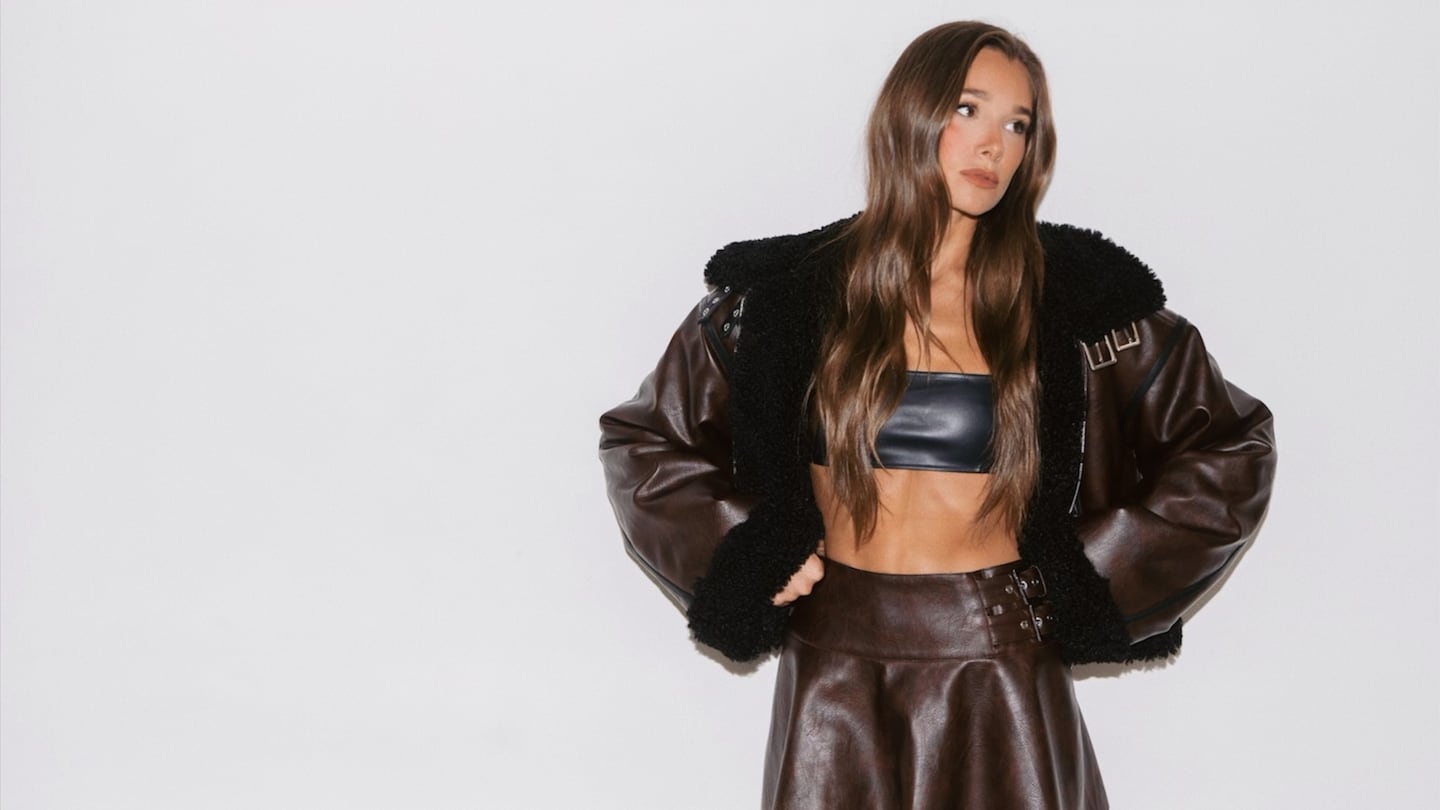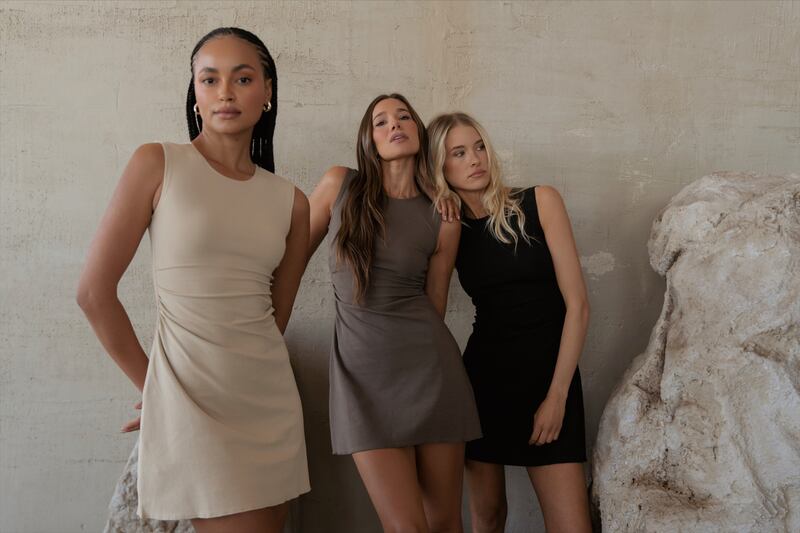
The Business of Fashion
Agenda-setting intelligence, analysis and advice for the global fashion community.

Agenda-setting intelligence, analysis and advice for the global fashion community.

Danielle Bernstein has been to the brink and back.
The influencer, known for her outfit photos and candid Instagram Story posts, was an early fashion blogger who translated her fame to Instagram, and later, product, with a 2015 collaboration with swimwear brand Onia that turned into an ongoing partnership and a 2019 team-up with Joe’s Jeans. But her attempt to parlay that moment into a fashion empire seemed to hit a roadblock in 2020, when, shortly after releasing a collection with Macy’s, Bernstein was hit with accusations that her brand’s skirts, dresses, and even face masks copied smaller designers’ work.
The controversy drew far more attention online than her clothes; the mere mention of Bernstein’s name on Instagram can attract a flood of negative comments. In January 2021, Insider even published an investigation into the accusations, uncovering new instances of alleged copying.
Bernstein always denied the allegations, even suing one brand after it accused her of copying a print.
ADVERTISEMENT
Three years on, Bernstein is no longer working with Macy’s (her partnership ended in early 2021). But her other brand, WeWoreWhat, is still going strong. Co-owned by Onia founders Carl Cunow and Nathan Romano, Bernstein said the brand hit $30 million in sales last year, through its own website and retail partners, including Revolve. She’s aiming for up to $40 million in 2023. On Oct. 20, she’s opening her first pop-up store, in New York’s NoHo neighbourhood, and is set to roll out two new categories, handbags and shoes.
The number of influencers who have been able to build lasting brands that last beyond the initial rush of attention is small. Add in some launch-day controversy, and the odds grow even longer.
After a splashy launch in 2020, Arielle Charnas’ Something Navy has closed its stores and its e-commerce website. Julia Berolzheimer shuttered her Gal Meets Glam clothing line in 2020, two years after launch (she’s since debuted a smaller brand, Parterre, that releases a more curated product assortment). In January, Sephora dropped TikTok star Addison Rae Easterling’s Item Beauty line. Two celebrity brand incubators, Forma Brands and Amyris, have filed for bankruptcy this year.
“Not all influencer-founded brands are that resilient,” said Sinead Norenius-Raniere, vice president of product and creator marketing strategy at media software company Cision. “[Bernstein’s] followers clearly feel deeply, deeply connected to her.”
Bernstein said she feels she’s been able to beat the odds because she’s found the right partners and taken a slow-and-steady approach to building the business, beginning with swimwear before embracing other categories like ready-to-wear, activewear or jewellery.
The goal now, she said, is to build something that’s bigger than social media.
“Just being an influencer, one second, you’re the hottest thing and every brand wants to work with you and the next, you’re potentially being cancelled,” she said. “But if you own your own product, and you own your own brand, and it can extend past you and your reach, then you have a really big potential career.”
WeWoreWhat isn’t Bernstein’s first brand. In 2016, she launched Second Skin Overalls, which sold one collection before shutting down. In 2015, she inked the Onia collaboration; in 2019, she debuted her own swimwear brand with the label.
ADVERTISEMENT
The Macy’s partnership, with a collection under her own name, was meant to take her personal brand to the next level, allowing Bernstein to branch out beyond swimwear and activewear, and to get her name in front of shoppers across the US.
At least, in theory. Her collection launched in 175 stores and Macy’s website on March 5, 2020, selling $2.5 million worth of product on launch day, BoF reported at the time. A week later, the pandemic forced the vast majority of Macy’s stores to close. The copycat accusations soon followed.
Bernstein says developing a “thick skin” helped her get through it.
“A big mistake I made when this was all happening was that I addressed every claim that came my way,” said Bernstein. “Learning to totally block that noise out and not address it has not only been a game changer for my mental health, but for my team and the brand.”
Bernstein said her critics seemed to be everywhere online, but she said there wasn’t much overlap with her customer base, who remained loyal.
“Just because you’re the loudest does not mean that is what the rest of your consumers think,” Norenius-Raniere said.
In 2021, Bernstein said Macy’s offered to renew the partnership for two more years. (A spokesperson for Macy’s stated that “Macy’s had a limited Danielle Bernstein capsule collection in 2020 that included four drops.”) She decided to bring the ready-to-wear aspect of the business under the WeWoreWhat brand to get closer to that consumer, selling primarily through direct-to-consumer, which represents 70 percent of their sales, while wholesale is 30 percent. The brand has expanded far beyond its initial category, swimwear: activewear arrived in August 2020, ready-to-wear in April 2021, lingerie in January 2022, jewellery in May 2023.
“I had less control when it was with this massive retailer,” she said. “There was good and bad involved with that, but being able to bring it under my brand allowed me to make sure that that was always a great experience for our customers.”
ADVERTISEMENT

Those devoted consumers have helped grow WeWoreWhat at a time when investors and traditional brands are reconsidering the value of working so closely with influencers. The celebrity brand boom in fashion and beauty has come and gone, and it’s become clear that more than a famous face with a devoted fanbase is needed to move product. Even Beyoncé's Ivy Park line with Adidas hasn’t been a smash success; earlier this year the Wall Street Journal reported that the brand’s sales reached $40 million in 2022, well below expectations of $250 million.
“Just because you have a big following does not equal success in retail,” said Norenius-Raniere. “There’s influencers that we look to for aspiration, but we wouldn’t buy something from.”
Today, WeWoreWhat has 40 employees, and Bernstein said staffers are vigilant about researching prints and designs on the market to ward off future copying claims.
The growth of the business has also meant that Bernstein’s day-to-day has changed. Now, she said, she spends 90 percent of her time on WeWoreWhat the brand, and just 10 percent on more traditional influencer partnerships.
“It’s not for everyone, building your own brand is a huge commitment. A lot of influencers that set out to create their own brands, they don’t know the first step,” she said. “That’s nobody’s fault, but I didn’t pretend to know how to build my own brand. I went out there and found the right people to help me do so.”
She’s still her brand’s most potent marketing tool. WeWoreWhat is a constant presence on Bernstein’s own feed, though the brand now works with other influencers too, including a sponsored trip to Tuscany in May.
The pop-up shop is set to open Oct. 20 and will run through the end of the year. The pop-up will also carry a new collection of cotton basics, and play host to a variety of customer and influencer events throughout the fall. If it goes well, permanent retail spaces could follow. After shoes and bags, she’s considered a home line.
Bernstein said her experience at the centre of a social media firestorm that become something of a ritual for public figures today. Her takeaway: listen to her gut, listen to her team and focus on the ultimate goal — growing WeWoreWhat.
“I’ve never apologised for who I am,” she said. “Although, if I make a mistake, of course, I’ll apologise.”
Editor’s Note: An earlier version of this story stated that Danielle Bernstein began her partnership with Onia in 2017. This is incorrect, the partnership began in 2015.
Calvin Klein’s chief marketing officer Jonathan Bottomley speaks to Imran Amed about the strategy behind the brand’s buzzy Jeremy Allen White-fronted campaign.
Often left out of the picture in a youth-obsessed industry, selling to Gen-X and Baby Boomer shoppers is more important than ever as their economic power grows.
This month, BoF Careers provides essential sector insights to help PR & communications professionals decode fashion’s creative landscape.
The brand’s scaled-back Revolve Festival points to a new direction in its signature influencer marketing approach.